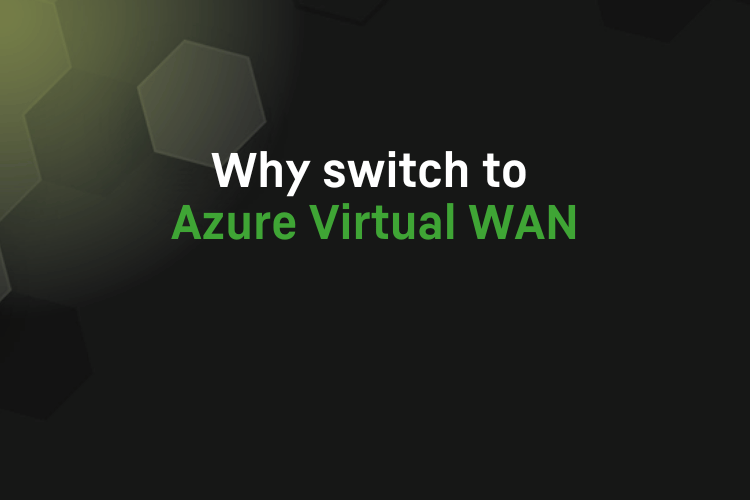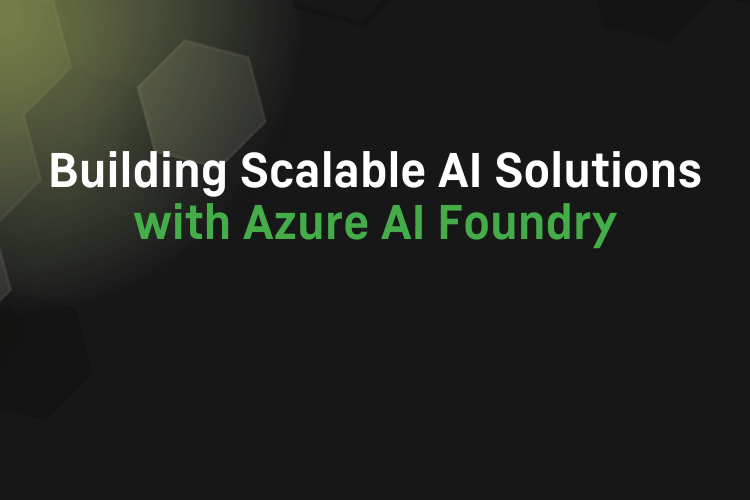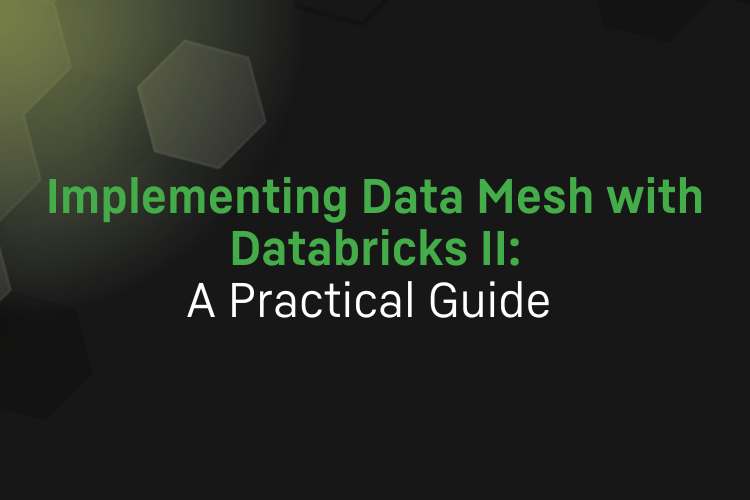by Ultra Tendency
Share
by Ultra Tendency

Transforming data architecture through decentralized ownership and federated governance
In the rapidly evolving landscape of data management, organizations are discovering that traditional centralized approaches often become bottlenecks to innovation and agility. Enter data mesh — a revolutionary paradigm that’s reshaping how enterprises think about data architecture. This comprehensive guide explores how to implement data mesh principles using Databricks, drawing from real-world implementations and practical insights.
What is Data Mesh?

The Four Pillars of Data Mesh

1. Domain Ownership
2. Data as a Product
3. Self-Serve Data Platform
4. Federated Computational Governance
The Case for Data Mesh: Benefits and Challenges
The Compelling Benefits
Accelerated Data Access: By enabling direct collaboration between data producers and consumers, organizations can eliminate the delays associated with centralized data teams. Changes and approvals happen directly between domain teams, dramatically reducing timeto-insight.
Enhanced Data Quality: Domain experts build more relevant, context-rich data products because they understand the business logic and use cases intimately. This insider knowledge translates to higher-quality, more useful data assets.
Improved Discoverability: The combination of decentralized ownership with centralized governance creates a “best of both worlds” scenario. Teams maintain autonomy while benefiting from unified discovery mechanisms.
Operational Efficiency: Data mesh enables streaming architectures, improves resource visibility, and supports smarter capacity planning. Teams can optimize their own resources without impacting others.
Robust Governance: Federated policies within domains, combined with centralizedauditing, create a governance model that’s both flexible and secure.
The Real Challenges
Increased Complexity: Managing a decentralized system requires sophisticated coordination across teams. The number of moving parts grows exponentially with the number of domains.
Cultural Transformation: Perhaps the biggest hurdle is organizational. Teams must shift from being data consumers to data product owners—a mindset change that often meets resistance.
Quality Inconsistency Risk: Without strong governance frameworks, data definitions and quality standards can drift between domains, creating confusion and integration challenges.
Higher Initial Investment: Implementing data mesh requires new tooling, extensive training, and the establishment of governance models. The upfront costs can be substantial.
Skill Gap Reality: Not all business domains have the technical expertise to manage data pipelines and products effectively. This skills gap must be addressed through training or hybrid team structures.
Why Databricks is the Ideal Platform for Data Mesh
Databricks naturally aligns with data mesh principles through its unified architecture and comprehensive feature set. Here’s how each principle maps to Databricks capabilities:
Domain-Oriented Ownership
Databricks Workspaces provide isolated environments where domain teams can developand deploy data pipelines independently, manage their own compute resources, control access to their data products, and operate without interfering with other domains.
Data as a Product
Delta Lake and Unity Catalog enable teams to create reliable, versioned data products with ACID transactions for data consistency, time travel for data versioning, comprehensive metadata management, and automated quality monitoring.
Self-Serve Platform
Databricks provides rich self-service capabilities through Delta Sharing for secure data sharing across organizations, Serverless compute for on-demand resource provisioning, Terraform automation for infrastructure as code, and Collaborative notebooks for development and documentation.
Federated Governance
Unity Catalog serves as the central governance layer, providing unified access controls across all domains, automated lineage tracking and metadata management, centralized auditing and compliance reporting, and policy enforcement without restricting domain autonomy.
Implementation Patterns: Two Proven Approaches
Pattern 1: Autonomous Data Domains

Domain Structure:
1. Source Data: Owned and managed by the domain
2. Self-Serve Compute: Independent Databricks workspace
3. Data Products: Domain-specific assets served to consumers
4. Business Insights: Ready-for-consumption analytics
5. Governance Compliance: Adherence to federated policies
Key Benefits:
• Maximum autonomy for domain teams
• Fastest time-to-market for new data products
• Natural alignment with business organizations
Best For: Organizations with mature data teams across domains and strong governance frameworks.
Pattern 2: Hub-and-Spoke Model

This hybrid approach balances domain autonomy with central coordination:
Spoke (Domain Teams):
• Focus on business logic and domain expertise
• Create domain-specific data transformations
• Understand consumer needs and use cases
• Maintain data quality within their domain
Hub (Central Platform Team):
• Manages shared operational concerns
• Hosts Unity Catalog and governance policies
• Provides platform services and infrastructure
• Handles cross-domain data integration
Key Benefits:
• Reduced duplication of effort
• Consistent operational standards
• Easier governance and compliance
• Lower barrier to entry for less technical domains
Best For: Organizations transitioning from centralized models or those with mixed technical capabilities across domains.
Performance and Cost Considerations
Performance Optimization Strategies
Resource Efficiency Through Decentralization: Data mesh architectures can improve performance by eliminating bottlenecks associated with centralized data processing. Data mesh addresses challenges of siloed, centralized data architectures by decentralizing data ownership, allowing teams to manage their data pipelines autonomously. It improves scalability, democratizes data access, and alleviates bottlenecks caused by centralized ETL processes.
Databricks-Specific Performance Optimizations: Configure domain-specific clusters with appropriate autoscaling to handle varying workloads without over-provisioning. To improve performance, tables require regular maintenance, such as optimizing the layout of the data, cleaning up old versions of data files that are no longer needed, and updating the clustering of the data. Organizations should also leverage Databricks’ vectorized Photon Engine for analytical workloads to achieve significant performance improvements and implement comprehensive tagging strategies to track resource usage by domain and optimize
accordingly.
Performance Challenges to Address: Multiple domains may create redundant data copies, potentially impacting query performance. Joining data across domains may introduce latency compared to centralized architectures, and federated governance processes can add computational overhead if not properly optimized.
Cost Management Strategies
Cost Optimization Opportunities: These performance improvements often result in cost savings due to more efficient use of compute resources. One of the most impactful strategies is utilizing discounted spot instances for cluster nodes, which is crucial for Databricks optimization. Domain teams can also optimize their specific workloads rather than sharing oversized centralized resources, while organizations can reduce infrastructure costs associated with storing and processing large datasets by eliminating centralized data warehouses or data lakes.
Cost Challenges in Data Mesh: Transitioning to a Data Mesh Architecture can be expensive, requiring investment in new tools and training. Without proper governance, domains may over-provision resources or create inefficient data processing patterns. One of the challenges of existing analytical data architectures is the high friction and cost of discovering, understanding, trusting, and ultimately using quality data—a problem that can exacerbate with data mesh as the number of data-providing domains increases.
Cost Control Best Practices: Use Databricks’ cost management tools to track spending across domains and implement automated policies to prevent resource waste and enforce budget limits. Identify opportunities for shared infrastructure (like Unity Catalog) to reduce per-domain costs and establish cross-domain cost optimization meetings to share best practices.
Balancing Performance and Cost
Smart Trade-offs: Optimize for computational efficiency while managing storage costs through data lifecycle policies. Choose appropriate processing patterns based on business requirements rather than technical convenience, and implement intelligent caching at the domain level to reduce redundant processing.
Monitoring and Optimization: Track query performance, resource utilization, and user satisfaction by domain. Implement chargeback models to encourage responsible resource usage and establish regular optimization cycles based on usage patterns and business changes.
Practical Implementation Considerations
Technical Prerequisites
• Databricks workspace architecture aligned with domain boundaries
• Unity Catalog deployment for centralized governance
• Delta Lake for reliable data storage and versioning
• Automated CI/CD pipelines for data product deployment
Organizational Readiness
• Executive sponsorship for cultural transformation
• Cross-functional teams with both business and technical skills
• Clear domain boundaries and ownership responsibilities
• Governance frameworks that balance autonomy with control
Success Metrics
• Time-to-insight for new data use cases
• Data product adoption rates across domains
• Data quality metrics and SLA compliance
• Developer productivity and self-service usage
Conclusion: The Future of Data Architecture
Data mesh represents more than a technological shift—it’s a fundamental reimagining of how organizations can unlock the full potential of their data. By combining the domain expertise of business teams with the technological capabilities of modern platforms like Databricks, enterprises can create data architectures that are both scalable and agile.
The journey to data mesh isn’t without challenges, but the benefits—faster insights, higher quality data, and more resilient architectures—make it a compelling path forward. As organizations continue to recognize data as a strategic asset, those who embrace decentralized, product-oriented approaches will gain significant competitive advantages.
Whether you choose the autonomous domains model or the hub-and-spoke approach, the key is to start with strong foundations: clear governance, the right technology platform, and most importantly, a commitment to organizational change. Understanding the performance and cost implications from the beginning will ensure your data mesh implementation is both effective and economically sustainable.
The future of data is decentralized, and with Databricks, that future is within reach.




